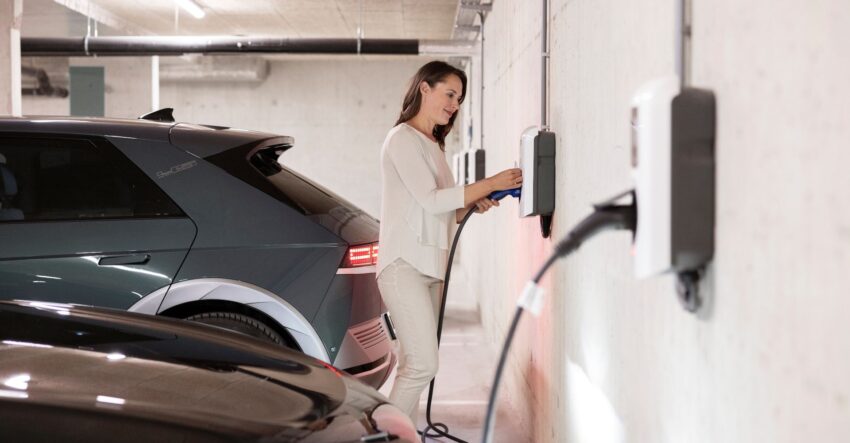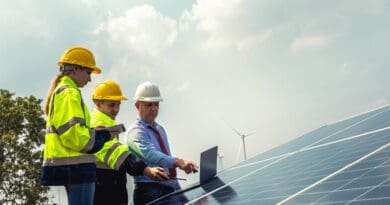What will the driveways of the future look like?

With consumer preferences trending towards bigger, heavier cars, and the national transition to electrification continuing at pace, we sat down with co-founder and CMO of myenergi, Jordan Brompton, to discuss the evolving requirements of the nation’s driveways.
It’s fair to say that the UK car park is changing fast. There are now more than 1.1 million electric vehicles (EVs) on the roads and this figure is only expected to rise. If we see a change of Government in July, the 2030 ban on new petrol and diesel car and van sales will likely be reintroduced, bringing it forward five years from the current date of 2035.
If this turns out to be the case, then the country will need to further accelerate its EV infrastructure, as well as supportive technologies, to suit a fast-developing landscape. We’ll see tens of thousands of public charging points deployed, alongside numerous other services to support a road network dominated by electric powertrains. The good news is that the latest report from the National Infrastructure Commission says that the UK is on track to hit its target of 300,000 public charge points by 2030.
But while the focus may initially be on public services, it’s highly likely that private amenities, such as domestic charging will soon fall under the microscope too. With this in mind, driveways will likely need to adapt to accommodate shifting consumer needs and government policy.
The home charging revolution
Today, around 84% of EV owners charge their EVs at home and it’s not hard to see why. The average household can save more than £1,000 per year by home charging (compared to using public networks), which is a significant cut to yearly running costs. Not only this, but nothing beats the convenience of being able to charge your car overnight in the comfort of your own home.
To make home charging easier and more cost-effective than ever before, energy providers are offering an increasing number of tariffs that are specially designed with EV owners in mind. For example, Octopus Energy’s Intelligent Octopus Go tariff, with which the myenergi zappi can integrate, can save users £500 a year when compared to standard tariffs, simply by utilising cheap overnight charging.
It’s therefore not too presumptuous to assume that home chargers will become standard fixtures on tomorrow’s driveways. And make no mistake, the technology is already there to meet this challenge. Take myenergi’s zappi, for example. The eco-smart device can not only take advantage of smart charging tariffs with cheap off-peak electricity, but also direct energy microgeneration (such as solar panels) to further reduce costs and carbon emissions.
Home charging ecosystems: technology evolved
Alongside the standard unidirectional (one-way) charging that traditional systems utilise, manufacturers are looking towards the potential of bi-directional capabilities. These allow electricity to flow both ways to and from an EV, opening up a whole new range of possibilities for the way EV owners use and store their energy.
Vehicle-to-grid (V2G) technology lets users export a proportion of the energy stored in their EV directly to the grid. With financial incentives offered from energy providers, vehicles can be used as backup batteries to improve grid stability and supply power during peak demand periods.
Vehicle-to-home (V2H) is another opportunity unlocked by bi-directional charging, with energy stored in an EV able to be supplied locally to power the home. This enables users to increase their energy independence, while providing a backup in case of a power cut.
Vehicle-to-load (V2L) acts in a similar fashion, except it does not require a separate bi-directional charging system. EVs with V2L capabilities have built in two-way charging and AC power outlets from which home appliance can directly draw power.
Real life, or the stuff of science fiction?
As we look even further ahead, we’re on the cusp of truly futurist technologies than will one day become the norm. Driverless, autonomous vehicles are already being trailed all over the world, so our driveways of the future may hardly resemble those of today at all. We may even need to take vertical space into consideration once we make the move to flying cars – or is that just wishful thinking?
A few years from now, we can expect driveways to be much more integrated with smart home technologies than they are today. EV charging systems will feature as standard, and our driveways will need to be adapted to serve more of a utility than simply where we store our cars overnight. To fully prepare for the accelerating transition to electrification, it’s essential to future-proof your driveway, even if you don’t yet own an EV.





